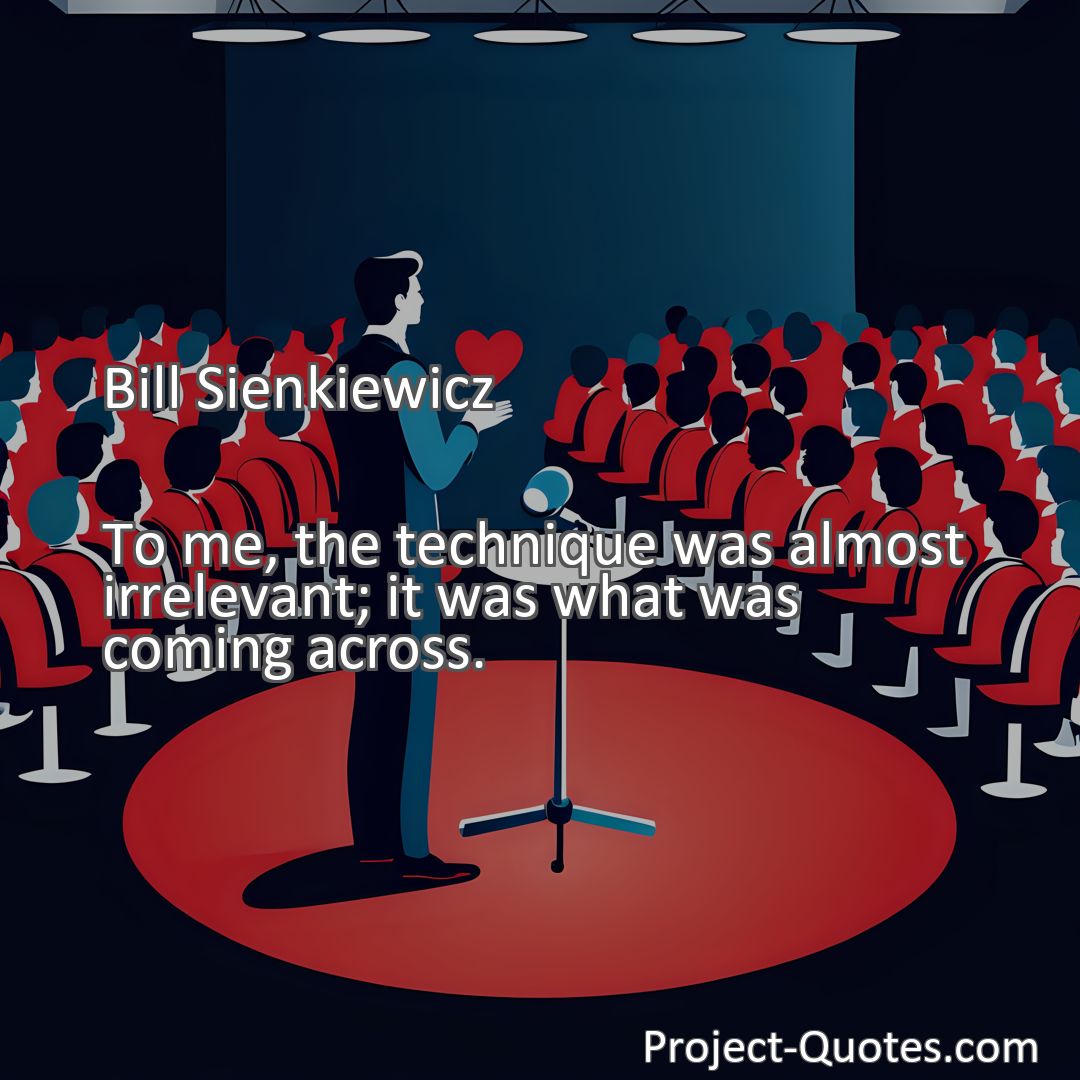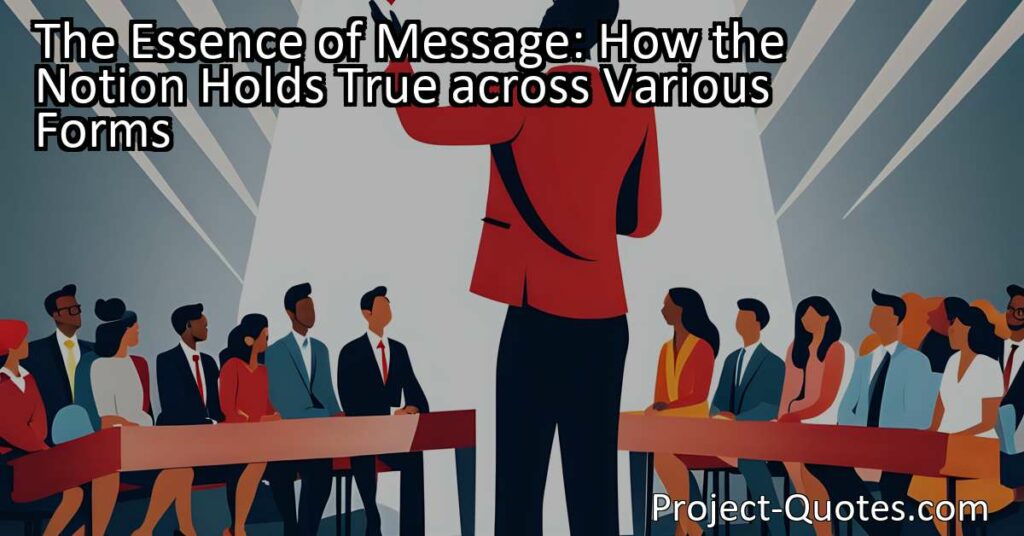To me, the technique was almost irrelevant; it was what was coming across.
Bill Sienkiewicz
The Essence of Message: How the Notion Holds True across Various Forms Whether it’s through writing, art, music, or conversations, the notion that the essence of a message matters more than the technique used to convey it holds true. While techniques, like symbolism in literature or brushstrokes in art, can enhance the overall experience, it’s the substance, emotions, and ideas behind the message that truly resonate with others and leave a lasting impact. So, let us remember that the essence of our messages has the power to foster understanding and create meaningful connections across different forms of communication.
Table of Contents
Meaning of Quote – To me, the technique was almost irrelevant; it was what was coming across.
When it comes to expressing oneself, the technique used to convey a message may not always be as important as the actual message being conveyed. This notion holds true across various forms of communication, from writing and art to music and even conversations. In essence, what truly matters is what is coming across, the essence of the message seeping through and leaving an impact. Though technique certainly plays a role in how effectively a message is delivered, it is ultimately the substance and meaning behind the words that hold the power to resonate with others.
In the realm of writing, authors and poets often employ various techniques to enhance their storytelling or evoke emotions within their readers. Techniques like foreshadowing, symbolism, and imagery can add depth and richness to a narrative, making it more engaging for the reader. However, it is important to note that while these techniques can enhance the overall experience, the heart of the story lies within the characters, their motivations, and the themes explored.
Consider a classic tale like “To Kill a Mockingbird” by Harper Lee. While Lee’s use of imagery and symbolism, such as the mockingbird representing innocence, contributes to the novel’s literary brilliance, it is the powerful themes of racism, injustice, and empathy that truly leave a lasting impact on readers. The technique employed becomes merely a vessel for conveying these profound messages.
Similarly, in the world of visual arts, technique can enhance the aesthetics and impact of a piece, but it is the emotions and ideas depicted that truly captivate viewers. Take, for instance, Vincent van Gogh’s famous painting “Starry Night.” The swirling brushstrokes and vibrant colors utilized by van Gogh create a sense of movement and energy, drawing the viewer’s attention. However, it is the expression of the artist’s inner turmoil and his enduring fascination with the night sky that give the painting its profound beauty. Whether one is well-versed in art techniques or not, the emotional resonance and the artist’s intention behind the painting can still be appreciated by anyone.
Moving beyond the realms of storytelling and visual arts, music also exemplifies how the technique may pale in comparison to the essence of the composition. Whether it is classical symphonies, soulful ballads, or catchy pop tunes, the power of a musical piece lies in its ability to evoke emotions, tell a story, or convey an idea. While technical aspects like rhythm, melody, and harmony contribute to the overall structure and appeal of a song, it is undoubtedly the lyrics and the emotions conveyed through the vocalist’s interpretation that allow listeners to connect with the music on a deeper level.
For example, let’s consider the iconic song “Imagine” by John Lennon. The simple piano accompaniment and the straightforward melody serve as an understated backdrop to the thought-provoking lyrics, which urge listeners to contemplate a world free from divisions and conflict. While Lennon’s songwriting skills and melodic choices certainly contribute to the song’s popularity, it is the profound message of unity and peace that resonates with listeners across generations, regardless of musical knowledge or technical understanding.
In everyday conversations and interactions, the same principle applies. The choice of words, tone of voice, and body language all contribute to how our message is received. Yet, it is the content and intention of our words that truly matter. Whether we are offering support to a friend, expressing love to a family member, or discussing an important topic, it is the underlying sentiments and thoughts behind our words that leave a lasting impression. People may forget our exact phrasing or the specific techniques we used, but they will always remember how we made them feel and the essence of our message.
In conclusion, while technique can certainly enhance the delivery and impact of a message, whether in writing, art, music, or conversations, it is ultimately the substance of the message that holds true significance. The essence of what is being conveyed, the emotions being evoked, and the thoughts being shared are what truly linger in the hearts and minds of others. So, let us not underestimate the power of our messages, for it is in their essence that we have the ability to touch lives, foster understanding, and create meaningful connections with others.
I hope this quote inspired image brings you hope and peace. Share it with someone who needs it today!


